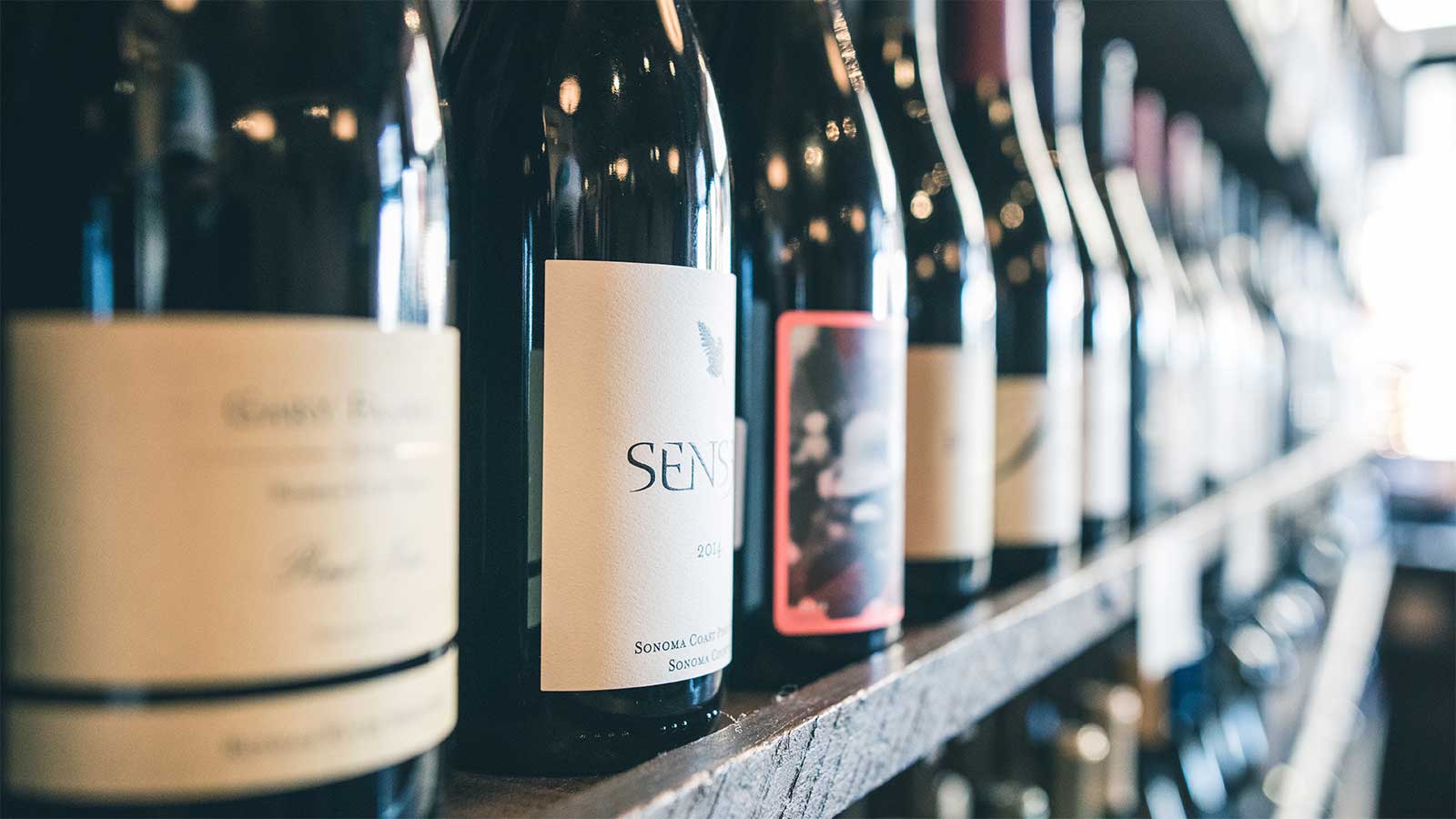It's good to be on the list
Newsletter
"*" indicates required fields

Creating a specialty wine is a complex feat and a true accomplishment. Countless factors come together to make a wine that is luxurious and classy. Once the product has been developed and perfected, the next important step is to design a wine label that meets all legal requirements while also helping your wine stand out as the unique and high-quality product it truly is.
Many shoppers visit the liquor store and make selections first based on price point, then based on the label. While the appearance of the label is what first catches the eye, the contents of the label are just as important for showcasing what makes your wine special.
In addition to the elements required by law outlined below, you may choose to share your brand story on your wine label or share relevant background information about how the wine came to be. With so many options available, creating a label that speaks to your consumers and wins their hearts before they even open the bottle can go a long way in the health of your business overall.
In order to keep your product on the shelves and to thoroughly educate potential consumers about your wine, it’s critical to include all factors required by law on your label. The Alcohol and Tobacco Tax and Trade Bureau (TTB) outlines various requirements for aspects that must be included on wine labels.
These requirements include:
You’ve created something special by making a custom wine. It deserves an equally special label! In designing your wine label, carefully consider the colors and fonts you will use.
When it’s time to choose the colors for your wine labels, keep the bottle color in mind first. White wines are generally packaged in clear or pale bottles, but red wines come in dark green bottles. Being intentional about the colors on your label can help you stand out on a crowded shelf without appearing unpolished or amateur.
Color trends for red wine labels often revolve around rich, deep tones, such as red, black, brown, and gold, while white wines often feature pastels. Operating within this color scheme can help illustrate that you are an established winemaker and that your product will meet industry standards. Depending on your brand style, you may choose brighter colors instead in order to stand out among many rich tones. Regardless of the colors you choose, narrow your label’s color palette down to just a few main shades for the sake of continuity.
In terms of fonts, choose one or two complementary fonts and stick to them throughout your label in order to appear professional and polished instead of crowded. This can also help you avoid detracting attention from the contents of your label. The font you choose for the front of your wine labels will instantly communicate the style of your brand: a curly script may suggest a classic take, while bold type means you may venture off the beaten path.
Common materials for wine labels include paper and BOPP plastic. While both of these options have stylistic and operational pros and cons, the label material you choose should align with your brand’s overall values.
Paper labels may send a message about sustainability and create a more local, personal product feel. They are also more cost-effective. However, paper labels do not hold up well when they come into contact with liquids, and you may notice staining if the wine comes into contact with a paper label.
BOPP plastic is an extremely durable material that comes in a variety of colors. For example, chrome BOPP plastic can help give your label a metallic shimmer, while white BOPP plastic is perfect for crisp graphics and a straightforward design process.
Depending on the priorities of your brand and the stage of your overall distribution, you may choose paper or BOPP plastic as your wine label material. Both can yield beautiful results. The team at Sprink is always happy to help you determine the best label material for your needs.
Ready to create a beautiful label and get your custom wine on the shelves?
Get an instant quote today!